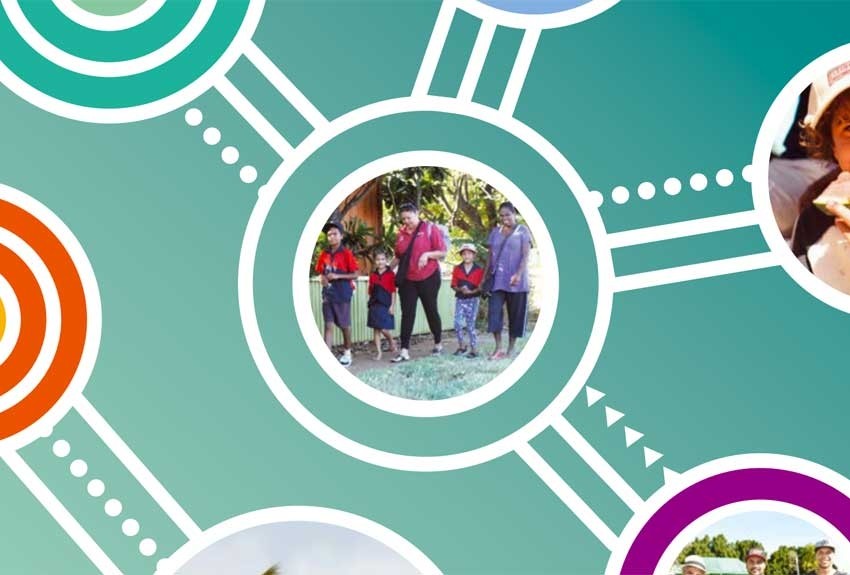Today is Close the Gap Day. A day when we recognise the health gap that exists for Aboriginal or Torres Strait Islander people, and identify what needs to be done to close this gap.
Since 2006, the Close the Gap Coalition — a group of Indigenous and non-Indigenous organisations — has called for governments to take action and achieve Indigenous health equality by 2030.
So what is the gap?
Non-Indigenous Australians can expect to live to their late 70's or early 80’s, an estimated ten to seventeen years longer than Aboriginal and Torres Strait Islander people. Non-Indigenous Australians are also half as likely to die by suicide or be hospitalised for mental health or behavioural reasons.
The United Nations’ report, State of the World’s Indigenous Peoples Australia, says that Australia (along with Nepal) has the world’s largest life expectancy gap between Indigenous and non-Indigenous people. While Australia has one of the highest life expectancies in the world, the 2.5 percent of Australians who identify as an Aboriginal or Torres Strait Islander have a similar life expectancy to the people of Bolivia or Palestine.
Behind these statistics are a range of health disparities, including higher rates of preventable illnesses such as heart disease, kidney disease and diabetes; higher infant and child mortality; and higher suicide rates.
What’s being done to close the gap?
The Council of Australian Governments (COAG) has developed six targets to address disadvantage, including halving child mortality by 2018 and reducing the life expectancy gap within a generation.
These targets have led to changes in the way health services are delivered in Indigenous communities, and some of these changes have been effective, resulting in:
- a reduction in the number of Aboriginal and Torres Strait Islander people dying from heart disease and stroke
- more Aboriginal and Torres Strait Islander children being immunized
- fewer children dying, with the gap in child mortality closing by 34 per cent
- an increase in Aboriginal and Torres Strait Islander young people completing Year 12.
Yet, the situation for mental health is less encouraging. Mental health is difficult to measure, so suicide rates and hospitalisations are often used as indicators. Figures released last week by the Australian Bureau of Statistics showed that suicide rates have increased for all Australians. Of particular concern is the situation for children and young people. This was highlighted last week when a ten-year-old Aboriginal girl took her own life.
ABS figures show that Aboriginal and Torres Strait Islander:
- people remain twice as likely to die by suicide than other Australians
- children aged 1–14 are nine times more likely to die by suicide than non-Indigenous children
- young adults aged 15–24 are four times more likely to die by suicide
- people are now three times more likely to be hospitalised for intentional self-harm than other Australians.
So what can be done?
There is currently no specific COAG target for mental health. While targets are in place and the gap is closing for physical health, the gap in mental health remains unacceptably large.
In its 2014 Review of Mental Health Programmes and Services, the National Mental Health Commission recommended that the government should endorse an additional COAG target for Indigenous mental health. The Commission noted that the existing Closing the Gap in Indigenous Disadvantage targets have driven change through government policy, and that including mental health would place a spotlight on this important issue and help to drive the changes that are desperately required. SANE Australia supports this recommendation as a way to keep the mental health of Indigenous Australians on the national agenda.
A framework for the development of mental health targets is already available. Leaders in Indigenous mental health have developed the National Strategic Framework for Aboriginal and Torres Straits Islander Peoples’ Mental Health and Social and Emotional Well Being 2004–2009 and the National Aboriginal and Torres Strait Islander Suicide Prevention Strategy can provide direction in the development of policy to ensure Aboriginal and Torres Strait Islander people have access to appropriate mental health services.
What can I do now?
- Attend a Close the Gap day event.
- Sign the pledge to achieve health equality for Aboriginal and Torres Strait Islander people by 2030.
- Write a letter to your local member of parliament, asking what they're doing to address Indigenous mental health in your community.
Where can I learn more?
- Closing the Gap Report
- Proppa Deadly – stories about Aboriginal and Torres Strait Islander mental health
- Information about the Close the Gap campaign
- Report by the Australian Health Department shows has been an increase in intentional self-harm rates between 2004 to 2013

